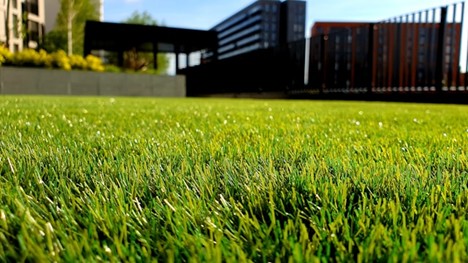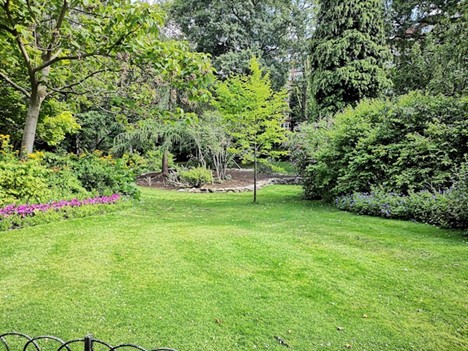Healthy grass relies on much more than just sunlight and water. It thrives from the ground up. When soil becomes compacted, roots have a harder time spreading, water runs off instead of soaking in, and vital nutrients can’t reach where they’re needed most. This is why lawn aeration is so important. Two of the most common approaches are core treatment (also called plug removal) and spike treatment (often referred to as turf poking).
Both involve puncturing the turf to relieve compaction and create pathways for air, water, and nutrients to circulate more freely. Yet, they work very differently beneath the surface, with varying levels of effectiveness and longevity. The following article explores how each technique functions, the advantages and drawbacks of both, and how to determine which approach is best for your lawn’s long-term health.
Why Soil Compaction is a Problem
Understanding the effects of compacted soil is key to knowing why lawns struggle.
Limited root growth: When soil particles are pressed tightly together, grass roots can’t spread out or grow downward. This leads to shallow, weak root systems.
Poor water absorption: Compacted ground sheds water rather than soaking it up, leading to puddles, runoff, or drought-stressed grass.
Nutrient lockout: Fertilizers and organic matter can’t penetrate deeply, leaving grass underfed even if you’re applying the right products.
Reduced oxygen flow: Roots need oxygen to grow. Dense soil restricts airflow, essentially suffocating the lawn.
Lawns exposed to heavy foot traffic, kids playing, pets running, or even regular mowing are especially prone to compaction. Clay-heavy soils are also more susceptible than sandy soils.
Core Treatment (Plug Removal)
Core treatment involves using a machine or hand tool that pulls out small plugs of soil and thatch from the lawn. The holes are usually 2–3 inches deep and about the width of a finger. The extracted plugs are left on top of the grass, where they naturally break down and return nutrients to the soil.
Benefits of Core Treatment
True soil relief: By physically removing plugs, core treatment reduces density and creates open channels for roots to expand.
Improved water infiltration: Rain and irrigation seep deeper, reducing runoff and promoting stronger root systems.
Better nutrient absorption: Fertilizers and natural minerals can penetrate more efficiently.
Thatch reduction: The process also helps break down thatch, the spongy layer of dead grass and roots that can smother healthy turf.
Long-lasting effects: Because soil is actually removed rather than compressed, results typically last longer than with spike methods.
Drawbacks
While core treatment is highly effective, it isn’t without drawbacks for homeowners. The machines themselves can be costly to purchase and even renting one can feel like a big investment for something used only once or twice a year. On top of that, operating the equipment can be physically demanding, especially for those with larger lawns or uneven terrain.
Afterward, the plugs of soil left scattered across the yard may appear messy or unkempt, often taking a week or two to fully break down and blend back in. For some homeowners, these challenges can make the process feel more like a burden than a benefit, which is why many choose to hire a professional instead. Lawn care specialists not only have access to commercial-grade equipment, but they also know the proper timing and techniques to maximize results, saving homeowners time, energy, and frustration while ensuring the lawn gets the best possible treatment.
Spike Treatment (Turf Poking)
Spike treatment involves puncturing the soil with solid tines, spikes, or even garden forks. Instead of removing plugs, this method pushes soil aside, creating holes without extracting material.
Benefits of Spike Treatment
Quick and simple: Tools are easier to use, and the process can be completed relatively fast.
Lower cost: No need to rent specialized equipment; many homeowners already own suitable tools.
Good for light compaction: Works well for sandy soils or lawns that only need mild loosening.
Low surface disruption: Since no plugs are removed, the lawn often looks neat immediately afterward.
Drawbacks
Spike treatment has its share of limitations that homeowners should consider before relying on it as a long-term solution. While it does create holes in the soil, the process can actually press the surrounding ground even tighter, leading to greater compaction, an especially concerning issue for heavy clay soils. The results also tend to be short-lived, often requiring more frequent treatments compared to plug removal. In many cases, the holes don’t penetrate deeply enough to truly benefit root systems, limiting the overall effectiveness of the process.
These drawbacks highlight why it’s often essential to hire professionals, who can assess soil type, recommend the best method for lasting results, and apply the treatment with specialized equipment designed to avoid making the problem worse.
Which Option is Better?
The best method depends on your soil type, the level of compaction, and your goals for lawn health.
When Core Treatment is Best
Clay-heavy soil: Dense soils benefit most from plug removal, which genuinely opens up the ground.
Heavily trafficked lawns: If kids, pets, or foot traffic compact your lawn regularly, core treatment provides lasting relief.
Overseeding plans: Creating deeper channels allows grass seed to settle in and germinate successfully.
Persistent drainage issues: Standing water after rain often indicates soil that would respond better to plug removal.
When Spike Treatment is Best
Light, sandy soils: These don’t compact as severely, so simple poking may be enough.
Quick fixes: If you want immediate relief before a rainstorm or fertilizer application, spiking works in a pinch.
Budget-friendly care: For homeowners who don’t want to rent or buy machinery, a spike tool can provide short-term improvement.
Small problem areas: Spot-treating high-traffic paths or pet play zones is easy with a garden fork.
Combining Both Methods
Some lawn care experts recommend a hybrid approach: using spike treatment throughout the year for small touch-ups, then scheduling a more thorough core treatment once or twice annually. This balance provides quick fixes when you need them but still ensures deeper, long-lasting soil relief.
Best Practices for Loosening Lawn Soil
No matter which method you choose, a few additional steps can help maximize results:
Time it right: Early fall and spring are ideal, when grass is actively growing and can quickly recover.
Water beforehand: Slightly moist soil is easier to penetrate—avoid working on bone-dry or soggy ground.
Follow up with overseeding and fertilization: Open channels provide the perfect opportunity to thicken your turf and feed the roots.
Mow low before treatment: Shorter grass helps machines or tools work more effectively.
Repeat regularly: Core treatment every 1–3 years and spike treatment as needed keeps compaction under control.
The Bottom Line
When it comes to loosening lawn soil, core treatment offers the most effective, long-lasting solution, especially for clay-heavy soils, compacted lawns, or anyone planning overseeding. By physically removing plugs, it opens pathways for air, water, and nutrients while giving roots room to thrive.
That said, spike treatment still has its place. It’s a budget-friendly, quick, and simple way to give your lawn temporary relief, particularly if your soil is naturally loose or you only need to address small areas.
For the healthiest lawn possible, think of soil-loosening treatments as preventive care, not just a rescue tactic. Choosing the right method and professional team ensures that your grass has the foundation it needs to stay green, lush, and resilient year after year.







